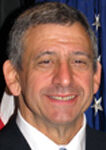Throughout the United States, most of the people who attend large-scale national and high-profile events – e.g., sports championships, concerts, fairs and festivals, and other events that have the potential to gather large crowds – never see the behind-the-scenes weeks or months of planning that precede the event. In planning any event, both natural and manmade hazards must be considered. Those hazards make the advance planning an even more complex process, because particular attention is required to deal with the potential risks and dangers that might well be involved when the safety of large crowds, as well as participants in the event, must be taken into consideration.
The process of pre-planning for special events is critical to the eventual success – or, possibly, failure – of that event. Having a detailed and effective pre-event plan in place will not only reduce response times but also enable agencies to improvise, if and when needed, because they have discussed numerous contingencies beforehand. A pre-event plan defines roles and responsibilities in advance and creates “ownership” of specific potential problems for the agencies that are directly involved in the planning process. Ideally, the pre-event plan should incorporate not only current plans and standard operating procedures and guidelines but also standing orders, best practices, and other relevant information that might help ensure safety and security.
Special-event plan development should be a joint effort between groups of people who represent a cross section of the agencies and jurisdictions that are involved in the emergency response effort. From a fire-department perspective, the fire chief should be the department’s primary representative in this group; however, he or she may delegate decision-making authority to another person who is empowered to speak for the department.
Advance Preparations – The Key to Both Success and Safety
Again using the fire department as a representative example, the pre-planning should start with the responsibilities that the fire department has within its jurisdiction. Depending on the locality, the department may or may not be the lead agency in special-event planning. The department’s specific responsibilities probably would include: (a) the coordination of all activities and operations necessary to protect the participating communities from natural, technological, and manmade disasters and other emergencies that might threaten the event; and (b) coordination of the response by ensuring that the most appropriate resources are dispatched to the areas directly affected.
During the pre-event planning process, the department’s responsibilities involving hazardous materials and/or weapons of mass destruction should be based on both the capabilities and training of the personnel involved and the resources likely to be available. In most if not quite all U.S. political jurisdictions, local fire departments are usually responsible for handling hazardous-materials incidents. As part of the planning process, therefore, the department must be informed well ahead of time about potential hazards and their locations.
The department also should be provided with an event map that: (1) includes a description, in as much specific detail as possible, of the potential hazards that might reduce the response time available in the event of a dangerous incident; and (2) allows the responding agency to be better prepared to deal with such an incident.
An important contingency possibility that should be kept in mind: If the local fire department itself does not possess the resources and equipment needed, or is not adequately trained to handle the hazardous material, then the pre-plan should identify – again, well in advance – the closest mutual-aid fire departments that are better equipped and, based on that important factor, should consider implementing mutual-aid agreements with those departments.
To briefly summarize: The planning for special events is an expansion of the existing day-to-day planning and preparedness process of most agencies. Each agency and jurisdiction should already have an emergency-response plan in place – as well as mutual-aid agreements. But no one agency can plan for any and all contingencies, and/or deliver the services necessary when an incident occurs at or during a major special event. For that reason, the planning process for such events should ensure that all participating agencies and jurisdictions should not only share all of the relevant information that is available but also check to ensure that the plans already in place are up to date. As President Dwight D. Eisenhower once said, “In preparing for battle I have always found that plans are useless, but planning is indispensable.”

Glen Rudner
Glen Rudner retired in 2022 as a manager of environmental operations for the Norfolk Southern (NS) Railway with environmental compliance and operations responsibilities in Tennessee, Alabama, Mississippi, and Louisiana. Previously, he was the hazardous materials compliance officer for NS’s Alabama Division (covering Alabama, Mississippi, Louisiana, and southwestern Tennessee). Prior to NS, he served as one of the general managers at the Security and Emergency Response Training Center in Pueblo, Colorado. He worked as a private consultant and retired as a hazardous materials response officer for the Virginia Department of Emergency Management. He has nearly 42 years of experience in public safety. He spent 12 years as a career firefighter/hazardous materials specialist for the City of Alexandria Fire Department, as well as a former volunteer firefighter, emergency medical technician, and officer. As a subcontractor, he served as a consultant and assisted in developing training programs for local, state, and federal agencies. He serves as secretary for the National Fire Protection Association Technical Committee on Hazardous Materials Response. He is a member of the International Association of Fire Chiefs Hazardous Materials Committee, a member of the American Society of Testing and Materials, and a former co-chairman of the Ethanol Emergency Response Coalition. He served as a member of the FEMA NAC RESPONSE Subcommittee.
-
Glen Rudnerhttps://www.domesticpreparedness.com/author/glen-rudner
-
Glen Rudnerhttps://www.domesticpreparedness.com/author/glen-rudner
-
Glen Rudnerhttps://www.domesticpreparedness.com/author/glen-rudner
-
Glen Rudnerhttps://www.domesticpreparedness.com/author/glen-rudner






